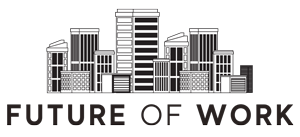Andrew Rodgers, principal in the leadership practice at Odgers Berndtson, explains why addressing leadership mindset, corporate identity, and intergenerational tensions can align team members and leaders over the return to office conflict
Globally, leaders are eager to see employees return to the office. 90% of companies plan to implement return-to-office policies by the end of 2024, with 72% already mandating office returns. Yet of that 72% of companies telling its employees to return to the office, almost half (42%) have experienced higher than normal employee attrition, with 29% now struggling to recruit.
Poorly thought through blanket return-to-office mandates, risk employee retention and unintended disruption. Without previous models to rely on, finding the right solution is challenging to say the least – already, 80% of leaders say they should have approached their return to office decisions differently.
So how can leaders loosen the tug-of-war between themselves and their employees, and come to a solution that unites and empowers, rather than divides and disengages? True ‘hybrid happiness’ requires a combined approach. Challenging and realigning leadership team mindsets, breaking down generational divisions, and confirming the corporate identity will dissolve the power struggle and achieve a productive outcome.
Shifting leadership team mindsets
A truly effective leadership team will inspire change rather than mandate or coax. Inspiring change requires confidence, connection, honesty, and the willingness and capacity to adopt new mindsets. Self-doubting or poorly connected leadership teams can be stuck in ‘no-man’s land’ or fall back on traditional forms of leadership, unable to tackle complex and novel challenges like how to bring people together more often.
Establishing this change requires new mindsets. This begins with honest reflection, asking: why would our teams want to come and work with us? As leaders, what do we provide that warrants calling people together? Leaders need to understand and acknowledge the competing priorities people are managing, such as child care arrangements, caring for ageing parents, economic challenges, or wellbeing commitments, holding these realities in tension, and finding the right balance considering all the stakeholders; individuals, customers, shareholders, and the organisation.
This is a mindset shift that requires leaders to step into the shoes of all stakeholders, including the employee population, imagining what it feels like to be on the receiving end of their leadership. This change process is achieved through an intentional mindset shift joureny, inspiring followership confidence and strengthened connection.
Establishing an authentically connected leadership mindset enables dialogue, which helps employees feel understood, which in turn makes them more likely to reconcile with and embrace proposed changes.
Bringing together intergenerational teams
Exacerbating the return to work power struggle is increasing workforce fragility, underpinned by generational differences. Millennials and Gen Z – with reported higher anxiety levels than older generations – are dispositioned to ‘voting with their feet’, while Baby Boomers and Gen Xers are more inclined to carry on and ‘suffer in silence’.
This generational divide threatens additional instability, at a time when cohesion and loyalty is needed to hold organisations together. Leaders want to take their businesses forward but are hesitant about these new tensions and their potential cost to workforce resilience.
However, being prepared to redraw the traditional boundaries, these divides can be used to unify an organisation beyond attitudes and instead around principles, outcomes, and impact. To do so, leaders need to understand employee concerns and their workplace desires, and foster followership around collective goals of creativity and collaboration in service of the identity and purpose of the organisation.
Intergenerational workshops are powerful and tackle the issues head on. Carefully facilitated intergenerational workshops on the hot topics (such as hybrid) allow common ground to be found. This creates an environment of trust where connection, creativity, and collaboration grow. This in turn creates a culture of confidence where the organisation can move forward and provide the foundation on which to make good decisions. With one business, we surveyed both the executives and a representative sample of their employees on a number of topics and found some considerable difference uncovering the root issue of low leadership impact. We were able to help the team engage with the findings and design an approach to increase connection and influence. Importantly, when leader-led, these workshops create expressions of care, employee-generated change, and organisational commitment to deliver.
Confirming corporate identity
To bring employees back to the office, an organisation needs to understand who and what it is. In addition to purpose, this requires leadership teams go deeper, establishing a true identity by asking: what do we need our organisation to do and be? And why is this expression of our identity right for us?
For example, food and drinks company Smucker’s introduced a ‘core weeks’ policy, which requires employees in the office during 22 ‘core weeks’ of the year. The model incentivises pivotal blocks of time for the company to be together, with employees reportedly keeping diaries open during these weeks for impromptu catch-ups with co-workers and spontaneous hallway conversations. The policy, and importantly how Smucker’s staff use the policy, embodies the company’s identity which includes intentional space for connection and relationships.
Leadership teams capable of establishing organisational identity, communicate a message of ‘this is who we are, and this is what we’re about’. The message creates confidence, which inspires employees, fostering loyalty, engagement and connection.
Two thirds of leaders globally predict a full return to in-office working by 2026. Based on current tensions that prediction is far from certain. What is certain, is to create secure organisations that can weather the coming storms well, leaders need to invest in initiatives that foster connection, confidence, and collaboration, to continue to grow.
Andrew is a Principal in the Leadership Practice at Odgers Berndtson. He has worked at a global executive committee level, with country leadership teams in the UK, Europe, Asia, and the Middle East. Some of his specialisms include the actuarial, legal, finance and education sectors, as well as sales and operations teams. He is a certified ICF coach on a mission to see leadership teams thrive.







